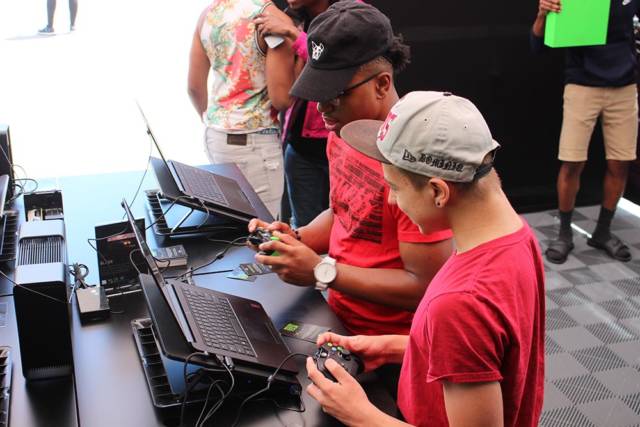In 2012, indie game developer Giant Sparrow made its debut with The Unfinished Swan, a game that begins with a plain white space that transforms into a story about a boy who chases a swan that has escaped a painting. The game also told the story of a lonely king, who is voiced by director, writer and actor Terry Gilliam (12 Monkeys, Fear and Loathing in Las Vegas and The Imaginarium of Doctor Parnassus), and it went on to win two BAFTA (British Academy of Film and Television Arts) awards, one for Game Innovation and the other for Debut Game.
More importantly, it established Giant Sparrow as a developer to keep a close eye on. So, there was certainly a great deal of interest from fans and critics when the developer announced its second game, What Remains of Edith Finch.
Released in April for PlayStation 4 and Steam and for Xbox One in July, Edith Finch is one of the first games published under the Annapurna Interactive label, which was announced in December as a division of Annapurna Pictures (Her, Zero Dark Thirty and Sausage Party). Its goal is to publish and produce “personal, emotional and original games that push the boundaries of interactive content and encourage artists to bring new visions to the medium,” according to an announcement.

Giant Sparrow’s creative director Ian Dallas described Edith Finch to AListDaily as “a collection of short stories about a cursed family.” Players take the role of the title character, Edith Finch, who is the last living member of the family. As players explore the massive house that she grew up in, they find stories of how each family member died contained in each bedroom, with 13 tales in total. With each discovery, players fill out a family tree as they progress, fleshing out a history that spans generations.
Although that might sound a bit morbid, Edith Finch received very high critical acclaim. It currently has a Metacritic score of 88, and GQ praised it with having the single best video game level of 2017 (so far). Dallas said that much of the connection fans feel for the game comes from Edith’s narrative, which is the backbone of the game and provides pacing for an otherwise intense series of stories. He also explained how, even though each story ends in a death, the circumstances around some of them may be ambiguous. It’s up to players to decide for themselves after seeing a version of events of what actually happened.
Dallas was originally inspired to create Edith Finch while scuba diving in Washington State.
“What stayed with me was a feeling of being at the bottom of Puget Sound, underwater, and looking at the bottom sloping away into the darkness seemingly forever. Nature can be simultaneously beautiful and horrifying. So, the kernel of this game came from the sublime horror of nature.”
He then found other inspirations that spoke to this horror, including The Twilight Zone, David Lynch movies and books by H.P. Lovecraft and Neil Gaiman. “[They] have an ominous tone that isn’t necessarily horror, but has a kind of existential feel,” said Dallas. “Human beings confronting a world they can’t understand and having to be OK with that.”
Dallas discovered that some of the best examples of this type of fiction tend to be short stories, which freed Giant Sparrow from a number of design constraints. “In a lot of games, the stories that you tell are constrained being two or 10 hours, which is what people expect from a video game,” said Dallas. “But once we settled on the short story format, we were able to have a lot of fun with that. Some are short and three minutes long. As a player, you never know what’s going to happen, which is in many ways part of making a game about the unknown. We wanted to keep players on their toes. You know that you’re going to die, but the moment-to-moment can become more interesting when you know that there is a final end waiting.”
Although Edith Finch might appear to be a puzzle game, Dallas doesn’t necessarily describe it that way. “It’s about discovering things, but the method of discovery is through snooping around a house,” he said. “For this game, we wanted a sensation of falling down a rabbit hole.”
Whatever genre of game Edith Finch falls under, both players and critics have taken very well to it. Dallas attributes the game’s appeal to how different and unique it is compared to most other games on the market today.
“We don’t have a particular audience that we’re trying to go for, other than people who are interested in things that they’ve never seen before,” said Dallas. “From watching players pick up the game, I think it appeals to those on either end of the [experience] spectrum. There are people who play a ton of games and are looking for something different, and those who don’t play very many games. Often, people end up playing only a few games—not because they’re uninterested—but because they’re bored with the kinds of experiences they usually offer, which are often hard challenges and power fantasies.”
Offering something different was a lesson that Giant Sparrow learned from making The Unfinished Swan. Although it was just one game, it helped fans expect the unexpected from the developer.
“It’s nice when they (fans) aren’t too surprised that this game looks nothing like The Unfinished Swan, but I hope that there’s enough of a thread [to connect them]. Both games are about the unknown and the feeling of awe and wonder.”
The sense of difference also lets the game stand out on Steam and the PlayStation Store. Dallas, discussing what it takes for an indie game to stand out on today’s console market, said, “I would describe it as vastly easier than it appears to be on places like the App Store. I can’t imagine releasing a game now on the App Store, where hundreds of games come out every day. At least on the PlayStation 4, there are not only fewer games, but fewer kinds of games. Consoles, and even Steam, tend to have a smaller range of experiences, but they’ve become homes for longer-form games compared to ones that take about two minutes to play. Annapurna and Sony have been great in helping to get the word out, and as a developer, it’s wonderful not to spend half of my time doing marketing. It’s been great working with them, and for a lot of other developers, a lot of time has to be spent fanning the fires.
“But ultimately, the games that we make are so bizarre that they should hopefully do a lot of the work themselves in terms of getting players’ attentions. We don’t need to convince people that our shooter is better than somebody else’s shooter. There’s nothing to compare this to, so we just need to get enough people aware of this new, interesting and peculiar thing in the world so that they can pass the message on.”





